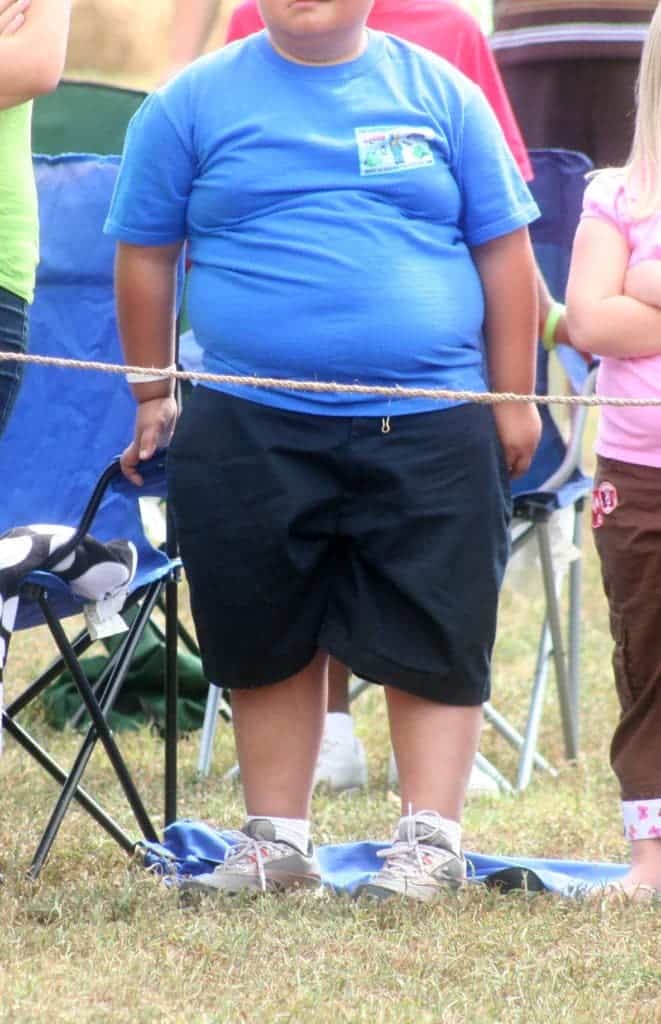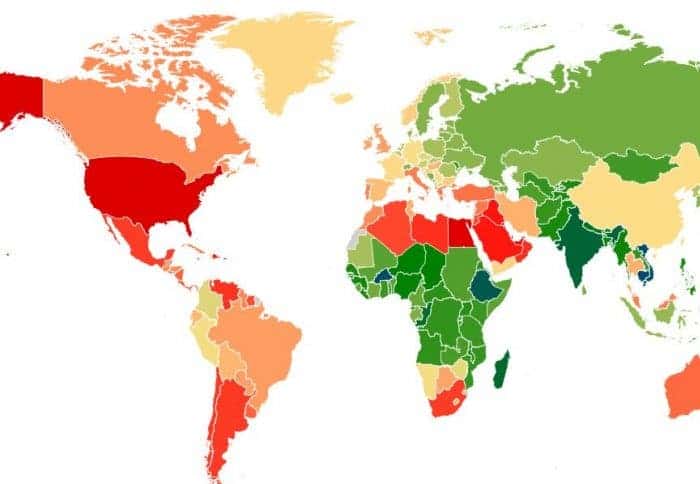In 2016, the number of obese children and teenagers rose to 124 million. Another 213 million children were overweight, a worrying new study shows.

Childhood obesity can lead to life-threatening conditions including diabetes, high blood pressure, heart disease, sleep problems, cancer, and other disorders. Credits: Tony Alter.
The most obese children (above 30%) were in some islands in Polynesia, with the US trailing close by. At a 20% child obesity rate, the US hosts the most obese children in the world. Several Arab countries (eg Egypt, Kuwait, Qatar and Saudi Arabia) also had similar rates. Overall, global obesity prevalence has increased to 5.6% for girls, and to 7.8% for boys, based on the Body Mass Index (BMI).
“Rates of child and adolescent obesity have increased significantly over the past four decades in most countries in the world,” says study author Dr James Bentham, University of Kent, UK. “While average BMI among children and adolescents has recently plateaued in Europe and North America, this is not an excuse for complacency as more than 1 in 5 young people in the USA and 1 in 10 in the UK are obese. Additionally, rates of child and adolescent obesity are accelerating in east, south and southeast Asia, and continue to increase in other low and middle-income regions.

The world will have more obese children and adolescents than underweight by 2022, according to a the study by Imperial College London and WHO.
The study, led by Imperial College London in the UK and the World Health Organisation (WHO), gathered data from 2,416 studies involving 128.9 million participants worldwide. Researchers warn that despite massive alarm flags coming from scientists and physicians, governments and policymakers have been slow to react and we are now seeing the effects of this lack of action. Most importantly, we have to change dietary habits — shift away from processed foods and sodas, and focus more on fruits and veggies — through market mechanisms such as taxation. Basically, researchers are indirectly calling for taxing sugar and other unhealthy foods. They say that current policies are especially harmful to people in developing countries and the underprivileged. Unhealthy foods are often cheaper than healthier alternatives, and that’s a problem.
Professor Majid Ezzati, study author from Imperial College London, explains:
“While there have been some initiatives led by governments, communities or schools to increase awareness about childhood and adolescent obesity, most high income countries have been reluctant to use taxes and industry regulations to change eating and drinking behaviours to tackle child obesity. Most importantly, very few policies and programmes attempt to make healthy foods such as whole grains and fresh fruits and vegetables affordable to poor families. Unaffordability of healthy food options to the poor can lead to social inequalities in obesity, and limit how much we can reduce its burden.”
The health issues associated with childhood obesity are complex and far-reaching. The first problems for these obese children are usually emotional or psychological. Bullying and depression go hand in hand with childhood obesity. In the long run, things are even worse, as the children are more likely to develop life-threatening conditions including diabetes, high blood pressure, heart disease, sleep problems, cancer, and other disorders.
To make things even more worrying, the study also found that globally, more children and adolescents remain underweight than obese. The prevalence of moderate and severe underweight has somewhat decreased (from 9.2% to 8.4%), but food security is still a pressing issue in many parts of the world. Almost two-thirds of all underweight children live in South Asia, where 20.3% of girls and 28.6% of boys were moderately or severely underweight in 2016.
Furthermore, these children aren’t at opposite ends of the spectrum — data shows that underweight children can quickly become overweight, due to the same reasons mentioned above. Foods that are poor in nutrients but high in calories tend to be cheaper than healthier alternatives, leading kids to become both obese and malnourished.
The data is pretty much stating what we already knew, but now we get to see the exact magnitude of the problem. Hopefully, faced with the evidence, political figures will take more serious action. By now, this is a worldwide health crisis which should not be treated lightly.
The study was published in the Lancet.










